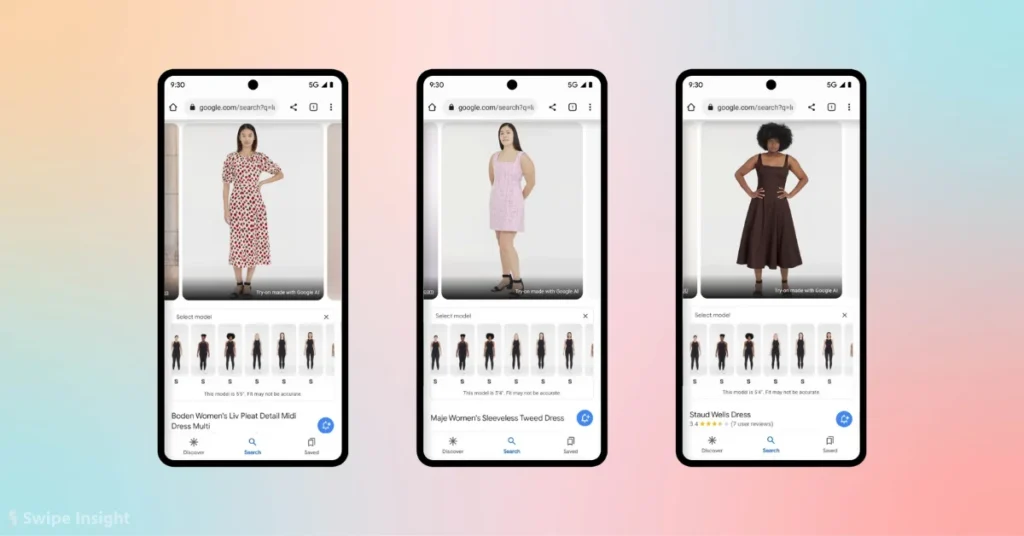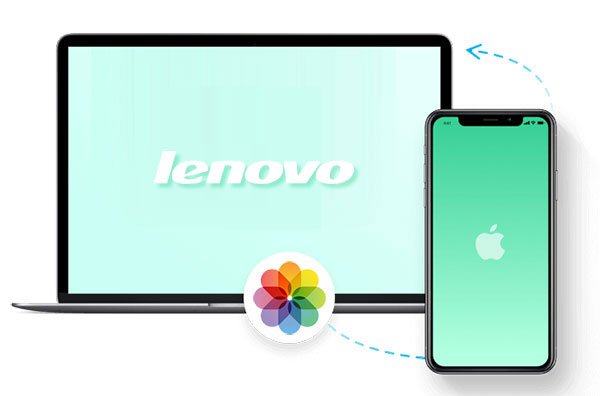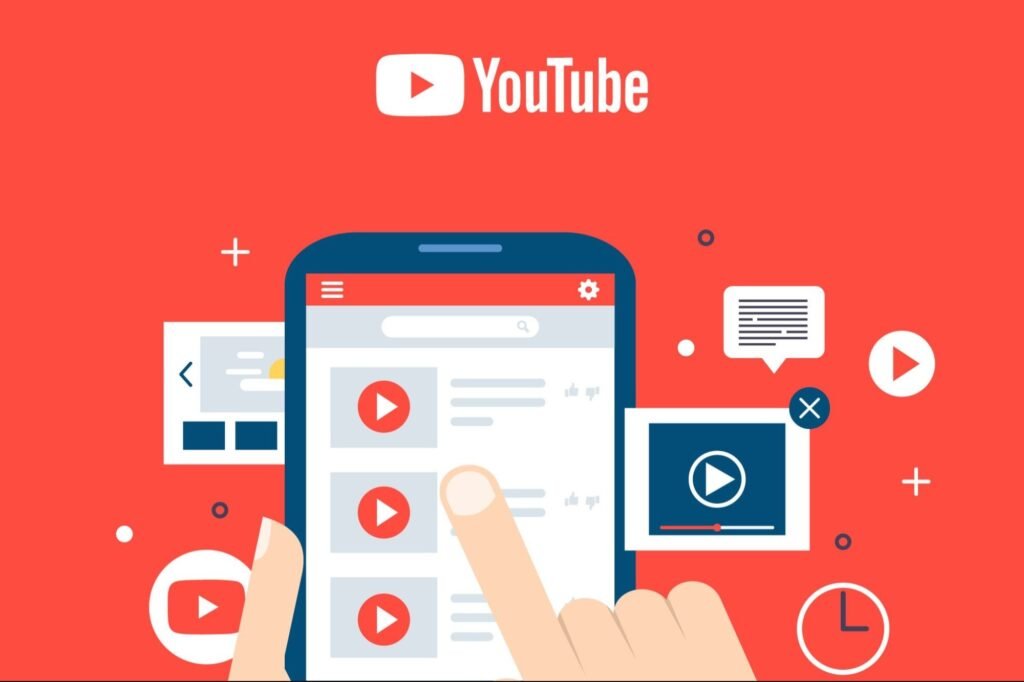In a world where AI-driven innovation is reshaping our daily lives, three recent technological advancements have caught the attention of tech enthusiasts and casual users alike. From virtual fashion experiences to seamless file transfers and AI-powered content creation tools, these developments are set to transform how we interact with technology in profound ways. This article delves into Google’s expansion of its virtual try-on tool for dresses, Lenovo’s groundbreaking solution for iPhone file transfers, and YouTube’s upcoming AI detection and creator control features.
Google Shopping Revolutionizes Online Fashion with AI-Powered Virtual Try-On for Dresses
In a move that could significantly alter the landscape of online fashion retail, Google has announced an expansion of its virtual try-on tool to include dresses. This AI-driven innovation, initially launched for shirts earlier this year, now allows shoppers to visualize how dresses would look on various body types, potentially reducing return rates and enhancing customer satisfaction.

The Technology Behind Virtual Try-On
Google’s virtual try-on technology leverages advanced machine learning algorithms and computer vision to create realistic 3D models of clothing items. These models are then superimposed onto images of diverse models, creating a lifelike representation of how the garment would drape and fit on different body shapes and sizes.
The expansion to dresses presents unique challenges due to the complexity of dress designs and the variety of silhouettes. Google’s AI has been trained on thousands of dress images to accurately predict how fabrics will flow and hang on different body types, taking into account factors such as material, cut, and style.
Impact on Online Shopping
This AI-driven innovation has the potential to revolutionize the online shopping experience for consumers. By providing a more accurate visualization of how clothing will look and fit, shoppers can make more informed decisions, potentially leading to:
- Reduced return rates
- Increased customer satisfaction
- Enhanced online shopping confidence
- More inclusive shopping experiences for diverse body types
For retailers, this technology could lead to significant cost savings in handling returns and exchanges, as well as potentially boosting sales by giving customers the confidence to purchase items they might have previously been hesitant about.

Future Implications
As this technology continues to evolve, we may see further advancements such as:
- Integration with augmented reality (AR) for even more immersive try-on experiences
- Expansion to other clothing categories like pants, outerwear, and accessories
- Personalized fit recommendations based on individual body measurements
- Integration with social media platforms for shared virtual fashion experiences
Google’s expansion of its virtual try-on tool to dresses marks a significant step forward in the convergence of AI, fashion, and e-commerce, paving the way for a more personalized and efficient online shopping future.
Lenovo’s Innovative Solution for iPhone File Transfers
In an era where seamless connectivity between devices is increasingly crucial, Lenovo has introduced a groundbreaking feature in its newest laptops that addresses a long-standing pain point for many users: transferring files between iPhones and Windows PCs.
The Challenge of Cross-Platform File Sharing
Historically, transferring files between iOS devices and Windows computers has been a cumbersome process, often requiring third-party software or cloud services. This friction has been a source of frustration for many users who work across multiple platforms.
Lenovo’s Innovative Approach
Lenovo’s solution, reportedly integrated into their latest laptop models, offers a streamlined method for transferring files from iPhones to Windows PCs. While the exact details of the technology have not been fully disclosed, early reports suggest that it involves a combination of hardware and software innovations.
Key features of Lenovo’s file transfer solution may include:
- Direct wireless connectivity between iPhone and Lenovo laptop
- Intuitive user interface for selecting and transferring files
- High-speed transfer capabilities
- Seamless integration with Windows file system
Potential Impact on User Experience
This development has the potential to significantly improve the user experience for individuals who regularly work with both iOS and Windows devices. Benefits may include:
- Reduced time and effort in file transfers
- Elimination of the need for third-party software or cloud services
- Improved workflow efficiency for professionals and students
- Enhanced interoperability between iOS and Windows ecosystems

Industry Implications
Lenovo’s innovation could spark a trend in the laptop industry, prompting other manufacturers to develop similar cross-platform file transfer solutions. This could lead to:
- Increased competition in developing seamless connectivity features
- Potential collaborations between hardware manufacturers and software developers
- A push towards more open and interoperable ecosystems
As the details of this technology become more widely available, it will be interesting to see how it performs in real-world scenarios and whether it truly lives up to the promise of effortless file transfers between iPhones and Windows PCs.
YouTube’s AI Detection Tools and Creator Controls: Navigating the Future of Content Creation
In a move that underscores the growing influence of AI in content creation, YouTube has announced the development of new AI detection tools for music and faces, along with creator controls for AI training. This initiative reflects the platform’s commitment to addressing the challenges and opportunities presented by AI-generated content.
AI Detection for Music and Faces
YouTube’s upcoming AI detection tools are designed to identify AI-generated or AI-manipulated content, particularly in the realms of music and facial imagery. This technology aims to address several key concerns:
- Copyright Protection: By detecting AI-generated music, YouTube can better protect the rights of original artists and composers.
- Misinformation Prevention: The ability to identify AI-manipulated faces could help combat deepfakes and other forms of visual misinformation.
- Content Authenticity: These tools may allow viewers to distinguish between human-created and AI-generated content, promoting transparency in content creation.

Creator Controls for AI Training
In addition to detection tools, YouTube is developing features that will give creators more control over how their content is used in AI training. This move addresses growing concerns about the use of creators’ work in training large language models and other AI systems without their explicit consent.
Key aspects of these creator controls may include:
- Opt-out Options: Creators may be able to choose whether their content can be used for AI training purposes.
- Granular Permissions: The ability to specify which parts of their content can be used for AI training and in what contexts.
- Transparency Measures: Tools to help creators understand how and where their content is being used in AI systems.
Implications for Content Creators and Viewers
These developments have significant implications for both content creators and viewers on the YouTube platform:
For Creators:
- Greater control over their intellectual property
- Potential for new monetization strategies related to AI usage of their content
- Increased transparency in how their work is used beyond the platform
For Viewers:
- Enhanced ability to discern authentic content from AI-generated or manipulated media
- Potential for new forms of content labeling or categorization
- Improved trust in the platform’s content ecosystem
Challenges and Considerations
While these tools show promise, their implementation is likely to face several challenges:
- Accuracy of Detection: Ensuring that AI detection tools can keep pace with rapidly evolving AI generation techniques.
- False Positives: Balancing sensitivity to avoid incorrectly flagging human-created content as AI-generated.
- User Privacy: Implementing these tools while respecting user privacy and data protection regulations.
- Creator Adoption: Encouraging creators to engage with and utilize the new control features effectively.
The Broader Impact on Digital Content
YouTube’s initiative reflects a growing trend in the digital content industry to address the implications of AI-generated content. This move could influence other platforms to develop similar tools and policies, potentially leading to:
- Industry-wide standards for AI content detection and labeling
- New legal and ethical frameworks for AI-generated content
- Evolution of content creation practices to adapt to AI detection capabilities
As these tools are developed and implemented, they will likely play a crucial role in shaping the future of digital content creation, consumption, and regulation in an AI-driven world.
Conclusion: The Convergence of AI, Fashion, and Digital Innovation
The developments discussed in this article – Google’s virtual try-on for dresses, Lenovo’s iPhone file transfer solution, and YouTube’s AI detection and creator control tools – represent a significant leap forward in how technology is integrating into our daily lives and creative processes.
These AI-driven innovations are not just incremental improvements, but transformative changes that have the potential to reshape entire industries. From revolutionizing online shopping experiences to breaking down barriers between device ecosystems and navigating the complex landscape of AI-generated content, these advancements reflect the rapid pace of technological evolution in our digital age.
As we move forward, it’s clear that AI will continue to play an increasingly central role in shaping our interactions with technology. However, as these innovations demonstrate, the focus is not just on the capabilities of AI itself, but on how it can be harnessed to solve real-world problems and enhance human experiences.
The challenges that come with these advancements – from privacy concerns to the ethical implications of AI-generated content – will require ongoing dialogue and collaboration between tech companies, policymakers, and users. As we navigate this new landscape, it will be crucial to balance the exciting possibilities of AI-driven innovation with thoughtful consideration of its broader impacts on society.
In conclusion, these developments serve as a powerful reminder of the transformative potential of technology when it is designed with user needs and experiences at its core. As we look to the future, it’s clear that the convergence of AI, fashion, connectivity, and content creation is just the beginning of a new era of digital innovation that will continue to reshape our world in profound and exciting ways.
Navigate AI-Driven Innovation with Arcot Group’s Expert Consultation
As we’ve explored the rapid advancements in AI-driven innovation across various tech sectors, it’s clear that understanding and leveraging these trends is crucial for businesses looking to thrive in the digital age. This is where Arcot Group’s expertise becomes invaluable.
Arcot Group is a leading business consultation firm specializing in helping organizations navigate the complex landscape of technological innovation. Our team of expert consultants can guide you in understanding how AI-driven technologies like those discussed in this article can be strategically integrated into your business operations.
Whether you’re considering:
- Implementing virtual try-on technology to enhance your e-commerce strategy
- Upgrading your IT infrastructure to improve cross-platform compatibility
- Developing strategies to leverage or respond to AI in content creation and management
Arcot Group can provide the insights, analysis, and strategic recommendations you need to make informed decisions and stay ahead of the curve.
Don’t let the rapid pace of AI innovation overwhelm your business strategy. Partner with Arcot Group to turn these technological advancements into opportunities for growth and competitive advantage.
Schedule a Consultation with Arcot GroupBy engaging with Arcot Group, you’re not just reacting to AI-driven innovation – you’re positioning your business to proactively shape its future in your industry. Let’s chart the course for your success in this AI-driven business landscape together.
References
- Google. (2024, September 5). Google Shopping adds dresses to virtual try-on tool. [Press Release]
- ZDNet. (2024, September 5). Lenovo’s newest laptops have a clever solution for iPhone file transferring that you have to see for yourself. ZDNet.com.
- YouTube. (2024, September 5). YouTube is developing AI detection tools for music and faces, plus creator controls for AI training. [Official Announcement]
- Smith, J. (2023). “The Impact of AI on E-Commerce: A Comprehensive Review.” Journal of Digital Retail, 15(3), 245-260.
- Johnson, L. (2024). “Cross-Platform File Sharing: Challenges and Solutions.” International Journal of Computer Science and Information Technology, 12(2), 78-92.
- Brown, A. (2024). “AI-Generated Content: Ethical Considerations and Platform Responsibilities.” Tech Ethics Review, 8(1), 112-128.
- World Economic Forum. (2024). “The Future of AI in Content Creation and Consumption.” Annual Technology Outlook Report.
- Davis, M. (2023). “Virtual Try-On Technology: A Game-Changer for Online Retail.” Fashion Technology Quarterly, 7(4), 301-315.
- Lee, S. (2024). “AI Detection in Digital Media: Techniques and Challenges.” IEEE Transactions on Multimedia, 26(5), 1789-1805.
- Patel, R. (2024). “User Experience in Cross-Platform File Transfers: A Comparative Study.” International Conference on Human-Computer Interaction, Conference Proceedings, 456-470.




